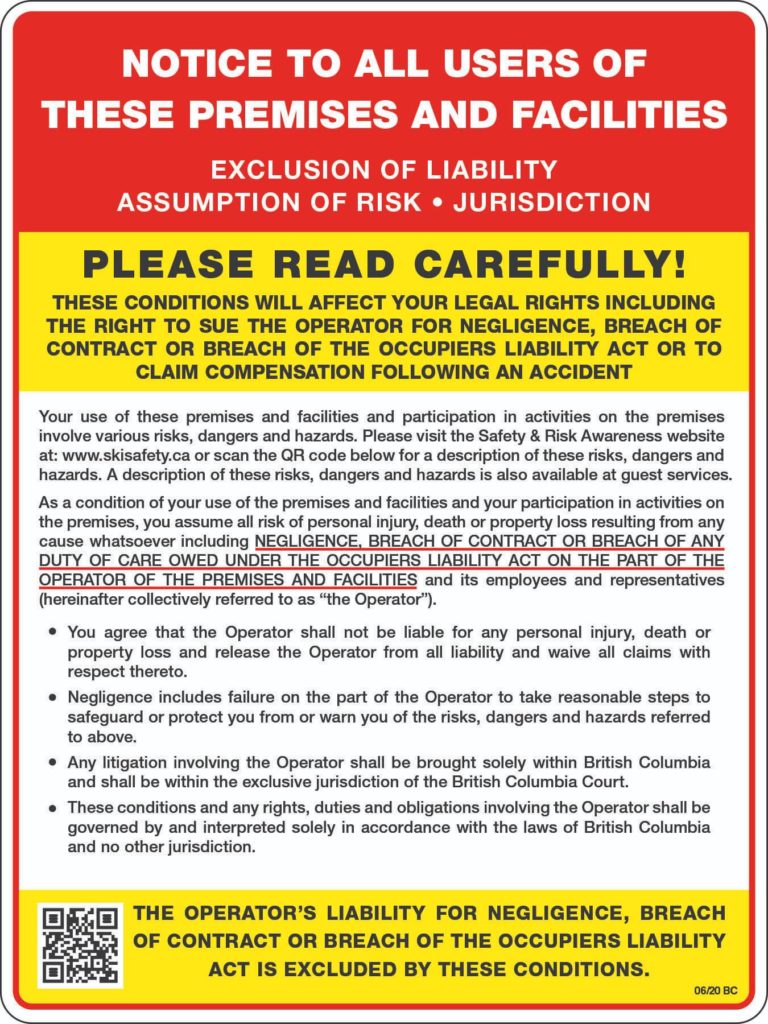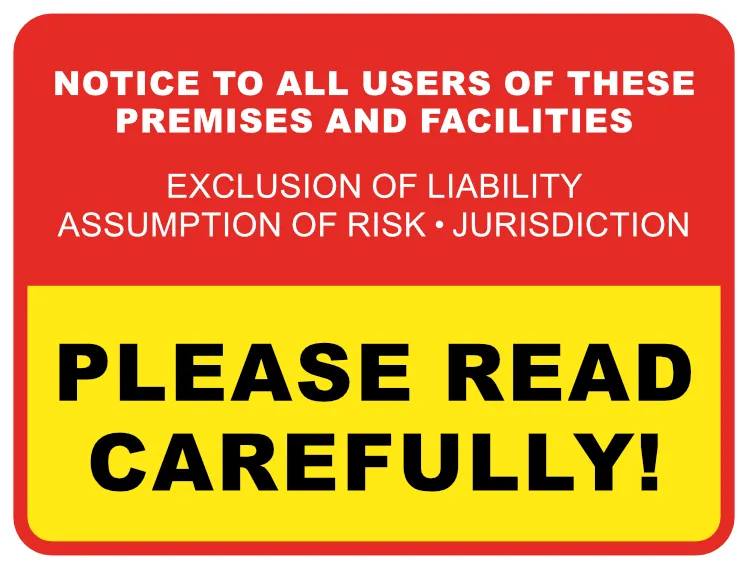SAFETY &
RISK AWARENESS
Click Image to View Full Size

It is a condition of your use of the premises and facilities and your participation in these activities that you assume all risk of personal injury, death or property loss resulting from any cause whatsoever, including negligence, breach of contract, or breach of any duty of care on the part of the ski area operator.
Your legal responsibility as a user of the ski area premises and facilities or participant in activities at the ski area is explained in the following notice, which you will see posted at the ski area.
View the Exclusion of Liability Notice applicable in your Province or Territory:
Alberta | British Columbia | Manitoba | Saskatchewan | Yukon | Ontario
PEI | Nova Scotia | Newfoundland | New Brunswick
Footwear plays an important role in reducing the risk of slips, trips and falls. Your footwear should be appropriate for the season, weather conditions and activity. Many types of footwear do not provide good traction, and extra caution should be used when visiting a ski area.
Visiting a ski area involves various risks, dangers and hazards including but not limited to the following:
- uneven or cracked surfaces;
- variations in the terrain or surface including but not limited to ruts, crevasses, holes, rocks, gravel, tree roots and other natural objects;
- ungroomed and unkept grounds, trails and areas;
- wet and/or slippery ground and floors;
- ice, snow, and slush in parking lots and on stairs, roads, sidewalks and pathways;
- icy or slippery condition of snow in and around the ski hill, tube park and other winter activity areas;
- loss of balance;
- dim or low lighting;
- changing weather conditions, including frequent thawing and freezing in the winter;
- encounters with domestic and wild animals including dogs and bears;
- failure to act safely or within one’s own ability or to stay within designated areas;
- negligent first aid;
- negligence of other persons;
- infectious disease contracted through viruses, bacteria, parasites, and fungi which may be transmitted through direct or indirect contact;
- and NEGLIGENCE ON THE PART OF THE OPERATOR and its directors, officers, employees, instructors, agents, representatives, volunteers, independent contractors, subcontractors, sponsors, successors and assigns.
- use of chairlifts and gondolas;
- changing weather conditions;
- slips, trips and falls;
- loss of balance;
- high speed descents;
- difficulty or inability to control one’s speed and direction;
- rapid or uncontrolled acceleration on hills and inclines;
- extreme variation in cycling terrain including steep or slippery sections, trees, roots, tree stumps, logs, cliffs, rocks, rock drops, loose gravel, holes, depressions, streams and creeks;
- constructed feature such as bridges, ramps, ladders, bumps, berms, jumps, and drops;
- mechanical failure of equipment;
- collisions with natural and constructed objects, other mountain bikers, vehicles, pedestrians, spectators and officials;
- encounters with domestic and wild animals including dogs and bears;
- negligence of other riders or users of the premises;
- infectious disease contracted through viruses, bacteria, parasites, and fungi which may be transmitted through direct or indirect contact;
- negligent first aid;
- accidents during mountain bike instructional courses, lessons, clinics or sessions;
- failure to act safely or within one’s own ability or to stay within designated areas;
- and NEGLIGENCE ON THE PART OF THE OPERATOR and its directors, officers, employees, instructors, agents, representatives, volunteers, independent contractors, subcontractors, sponsors, successors and assigns.
- walking on rough and uneven terrain (choose footwear carefully);
- weather conditions which may cause the walkways, decks, equipment, apparatus and zip lines to be slippery or hot;
- extreme and variable weather including but not limited to electrical storms, hail, snow, poor air quality or high winds;
- equipment failure; failure to properly adjust or fasten equipment; improper use of equipment;
- over-exertion, shock, stress or other injury to the body;
- exposed and falling earth, ice, trees, tree stumps, and forest deadfall or other natural object;
- travel on back-country roads;
- slips, trips and falls;
- failure to act safely or within one’s own ability or to stay within designated areas;
- impact or collision with objects, trees, or people;
- falls from heights;
- encounters with domestic and wild animals including dogs and bears;
- negligence of other participants and other persons;
- negligent first aid;
- infectious disease contracted through viruses, bacteria, parasites, and fungi which may be transmitted through direct or indirect contact;
- and NEGLIGENCE ON THE PART OF THE OPERATOR and its directors, officers, employees, instructors, agents, representatives, volunteers, independent contractors, subcontractors, sponsors, successors and assigns.
- boarding, riding and disembarking lifts;
- falling out of or being ejected or thrown from a tube;
- improper use or failure of equipment;
- collision with or being struck by persons, objects, vehicles, equipment, or natural or man-made obstacles, whether inside or outside of the tube park boundaries;
- failure to stop or slow down in designated areas, to stay within a tubing lane or the boundaries of the Tube Park;
- loss of balance or control;
- slips, trips, and falls;
- variable and difficult conditions associated with wind, snow or ice;
- negligent first aid;
- negligence of other persons;
- and NEGLIGENCE ON THE PART OF THE OPERATOR and its directors, officers, employees, instructors, agents, representatives, volunteers, independent contractors, subcontractors, sponsors, successors and assigns.
- boarding, riding and disembarking ski lifts;
- changing weather conditions;
- avalanches;
- trees, tree wells, tree stumps and forest deadfall;
- the condition of snow or ice on or beneath the surface;
- variations in the terrain which may create blind spots or areas of reduced visibility;
- variations in the surface or sub-surface, including changes due to man-made or artificial snow;
- variable and difficult conditions;
- streams, creeks, and exposed holes in the snow pack above streams or creeks;
- cliffs; crevasses;
- snowcat roads, road-banks or cut-banks;
- exposed rock, earth, ice, and other natural objects;
- collision with lift towers, fences, snow making equipment, snow grooming equipment, snowcats, snowmobiles or other vehicles, equipment or structures;
- encounters with domestic and wild animals including dogs and bears;
- collision with other persons;
- loss of balance or control; slips, trips and falls;
- accidents during snow school lessons;
- infectious disease contracted through viruses, bacteria, parasites, and fungi which may be transmitted through direct or indirect contact;
- negligent first aid;
- failure to act safely or within one’s own ability or to stay within designated areas;
- negligence of other persons;
- and NEGLIGENCE ON THE PART OF THE OPERATOR and its directors, officers, employees, instructors, agents, representatives, volunteers, independent contractors, subcontractors, sponsors, successors and assigns.
The ski boot/binding system for alpine skiing may not release during every fall or may release unexpectedly. The ski boot/binding system is no guarantee that the skier will not be injured.
The snowboard boot/binding system is not designed or intended to release and will not release under normal circumstances. Given the snowboard boot binding system is a non-release system, the system will not reduce the risk of injury during a fall and will increase the risk of not surviving an avalanche.



